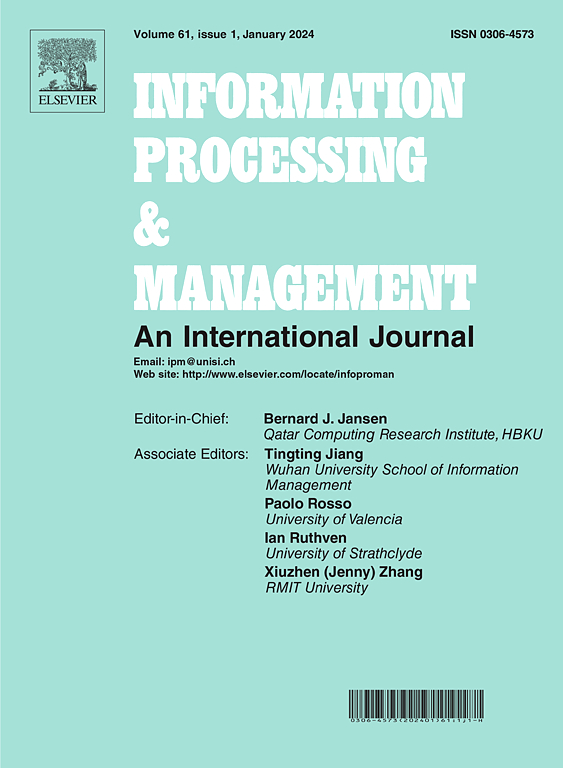AlignTime: Interperiodic phase alignment sampling for time-series forecasting
IF 6.9
1区 管理学
Q1 COMPUTER SCIENCE, INFORMATION SYSTEMS
引用次数: 0
Abstract
Time-series forecasting is widely applied in various fields to provide decision-making support. However, existing forecasting methods often struggle to capture periodic behavior in nonstationary sequences. When periodic fluctuations exhibit nonstationarity over time, current forecasting architectures can face difficulties in effectively handling dynamic phase shifts across different periods. To address these challenges, we proposed AlignTime — a novel time series forecasting model that revisits forecasting from a downsampling perspective. We treated each period in a time series as an independent analytical unit and considered elements in the same phase to share similar signal properties. By sampling these phase-aligned elements, we constructed a phase subsequence rich in features from different periods, enabling a deeper understanding and utilization of intrinsic periodic patterns. We introduced a method for computing the globally dominant period and performed phase-aligned sampling based on it, effectively aggregating time points in the same phase. We then employed phase-enhanced convolution to extract features from the phase-aligned subsequences, captured dynamic phase shifts between periods, and represented the data in the feature space. Finally, we aggregated the feature subsequences from each phase window to generate the final predictive sequence, fully leveraging the inter-period dynamic phase correlations. We conducted extensive experiments on both long- and short-term forecasting tasks. For long-term forecasting, AlignTime achieves a 6.85% improvement in MSE and a 4.09% improvement in MAE compared to baseline models. For short-term forecasting, over 70% of the results achieve optimal performance, confirming the effectiveness of AlignTime in time-series forecasting tasks. Code is available at: https://github.com/xiaoxiaomiwang/AlignTime.
用于时间序列预测的周期间相位对准采样
时间序列预测广泛应用于各个领域,为决策提供支持。然而,现有的预测方法往往难以捕捉非平稳序列的周期性行为。当周期性波动随着时间的推移表现出非平稳性时,当前的预测体系结构在有效处理不同时期的动态相移方面可能面临困难。为了解决这些挑战,我们提出了AlignTime——一个新的时间序列预测模型,从下采样的角度重新审视预测。我们将时间序列中的每个周期视为独立的分析单元,并考虑相同相位的元素以共享相似的信号特性。通过对这些相位对齐元素进行采样,我们构建了一个富含不同时期特征的相位子序列,从而能够更深入地理解和利用内在的周期模式。我们引入了一种计算全局主导周期的方法,并在此基础上进行了相位对齐采样,有效地聚集了同一相位的时间点。然后,我们使用相位增强卷积从相位对齐子序列中提取特征,捕获周期之间的动态相移,并在特征空间中表示数据。最后,我们将每个相位窗口的特征子序列聚合以生成最终的预测序列,充分利用周期间的动态相位相关性。我们对长期和短期预测任务进行了广泛的实验。对于长期预测,与基线模型相比,AlignTime的MSE提高了6.85%,MAE提高了4.09%。对于短期预测,超过70%的结果达到最优性能,证实了AlignTime在时间序列预测任务中的有效性。代码可从https://github.com/xiaoxiaomiwang/AlignTime获得。
本文章由计算机程序翻译,如有差异,请以英文原文为准。
求助全文
约1分钟内获得全文
求助全文
来源期刊

Information Processing & Management
工程技术-计算机:信息系统
CiteScore
17.00
自引率
11.60%
发文量
276
审稿时长
39 days
期刊介绍:
Information Processing and Management is dedicated to publishing cutting-edge original research at the convergence of computing and information science. Our scope encompasses theory, methods, and applications across various domains, including advertising, business, health, information science, information technology marketing, and social computing.
We aim to cater to the interests of both primary researchers and practitioners by offering an effective platform for the timely dissemination of advanced and topical issues in this interdisciplinary field. The journal places particular emphasis on original research articles, research survey articles, research method articles, and articles addressing critical applications of research. Join us in advancing knowledge and innovation at the intersection of computing and information science.
 求助内容:
求助内容: 应助结果提醒方式:
应助结果提醒方式:


